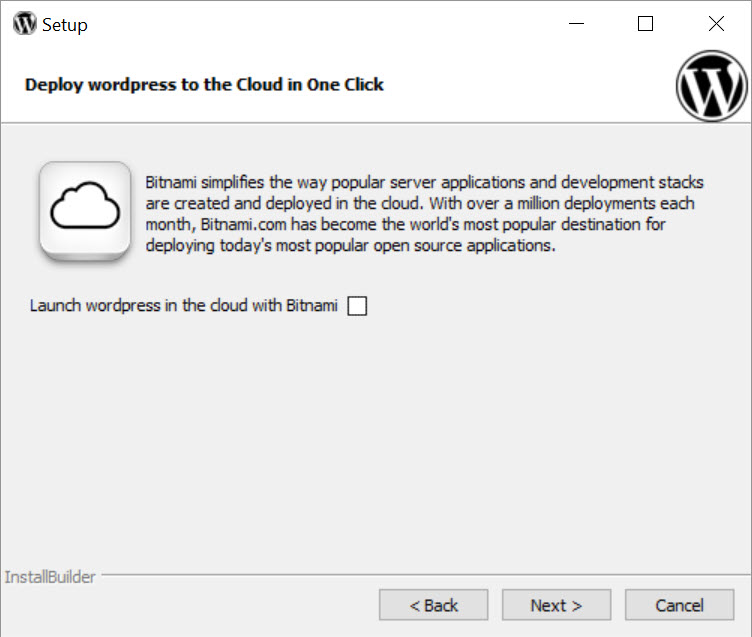

- #Aws bitnami wordpress stack custm domain config install#
- #Aws bitnami wordpress stack custm domain config pro#
As the server’s type of operating system image, I choose a Linux server with WordPress and its dependencies installed by default. In the next screen, you can select in which region you want to base your server.

To create the server or instance as it’s called in the AWS ecosystem, navigate to AWS Lightsail, select the “Instances” tab, and click on “Create instance”. It’s a competitor service to Digital Ocean. The pricing of these VPS is similar to a three year reserved EC2 instance without the commitment. Lightsail provides developers with compute, storage, and networking capacity and capabilities to deploy and manage websites and web applications in the cloud. It is the easiest way to get started with AWS for developers. The end result is that WordPress makes building a website accessible to anyone – even people who aren’t developers.įor simplicity in this post, I will focus on setting up all parts in a dedicated VPS instance in Amazon Lightsail. There is a huge ecosystem of plugins and themes. WordPress is an open-source content management system and powers over 40.0% of all the websites on the Internet.
#Aws bitnami wordpress stack custm domain config install#
So it appears that the WPMU Domain Mapping plugin is unnecessarily included in the AWS Lightsail Bitnami Multisite package.Here I’m going to show you how you can install WordPress using AWS Lightsail, set up a CDN for high performance, and handle traffic spikes without a problem from $6 per month. If you’re using an older version, you will need the WordPress MU Domain Mapping plugin. This domain mapping functionality is included in WordPress Multisite since v4.5. If it was not for that, I would still be scratching my head. Comment out: // define('SUNRISE', 'on') Īfter these changes, login was successful - no errors.

* That's all, stop editing! Happy blogging. Add the following: define('ADMIN_COOKIE_PATH', '/') Ensure the WPMU Domain Mapping plugin is disabledĮdit /opt/bitnami/apps/wordpress/htdocs/wp-config.php.Ī.the site's frontend loads fine, but I just can't login to WP admin.įinally after hours, literally, of troubleshooting I was able to get this resolved on the AWS Lightsail Bitnami Multisite Wordpress (WordPress 5.0.4) instance by performing the following:
#Aws bitnami wordpress stack custm domain config pro#
The same issue occurs if I use WP Migrate DB Pro to pull in a standalone website into a MU subdomain site, then delete the standalone site from cPanel, and then set the MU subdomain site's domain to be the original standalone site's domain name. I tried adding the following to wp-config.php: define('COOKIE_DOMAIN', false) The main site loads fine now on its original domain name, but when I try to login to the subdomain site at /wp-admin/ (using the brand new multisite's network admin user credentials), I receive an error:ĮRROR: Cookies are blocked or not supported by your browser. I then deleted the original standalone site from cPanel, and set the MU site's domain name to the original domain name.

I created a brand new Multisite install with subdomains, created a MU network site with subdomain URL, and exported the content from the original standalone site, then imported that content into the subdomain MU site. I decided to integrate several standalone WordPress websites into a single Multisite installation.


 0 kommentar(er)
0 kommentar(er)
